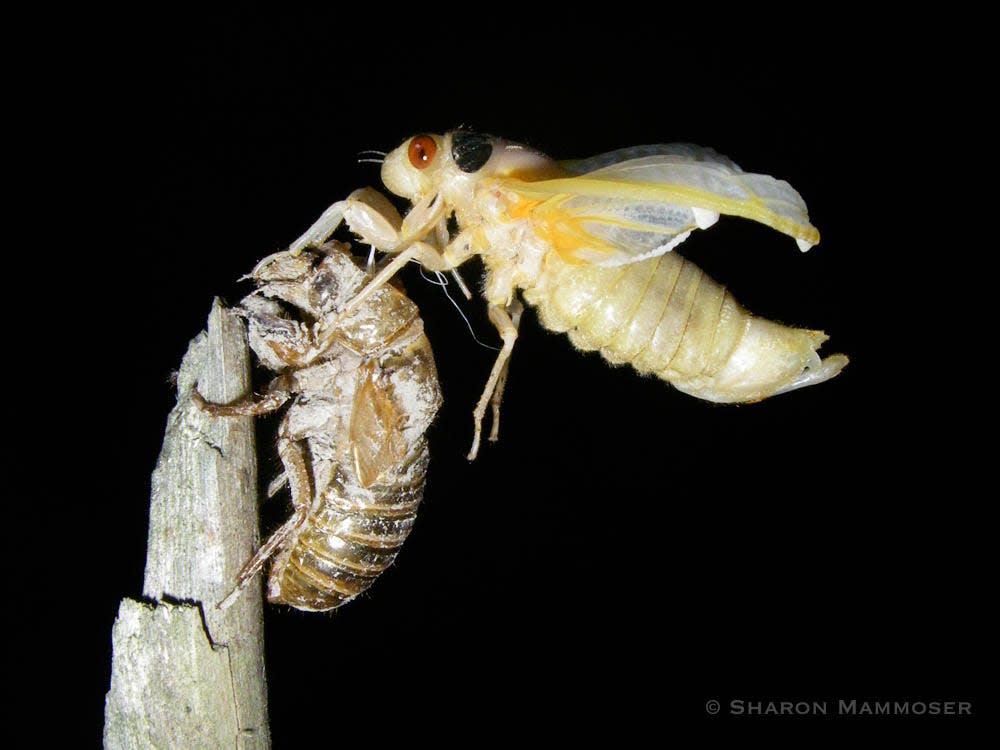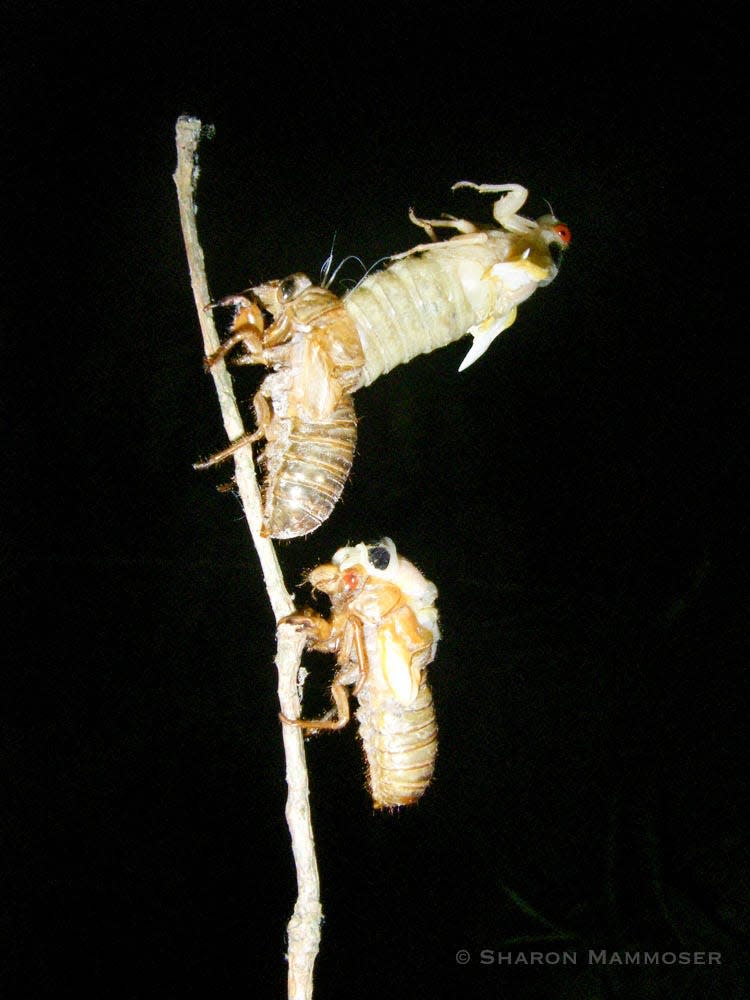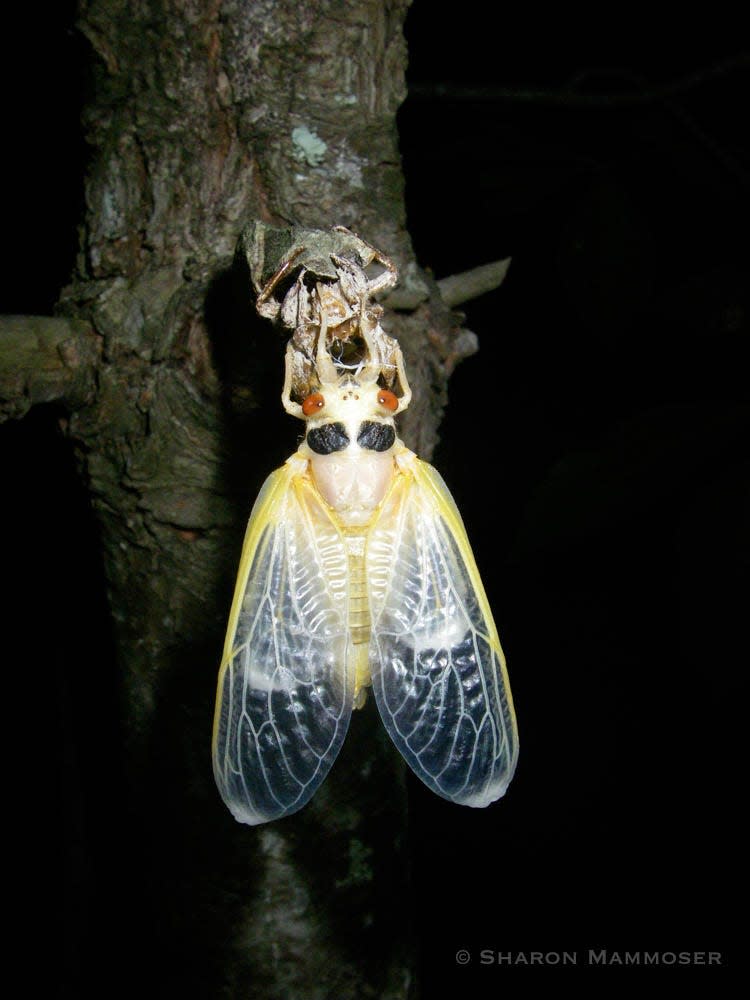Embrace, enjoy the cicada show, courtesy of Mother Nature
You’ve probably heard about the coming of the periodical cicadas this spring. Articles about them recently are common.
In our area, the 13-year cicadas will be emerging when the temperature at 8 inches underground reaches 64.5 degrees. In other states, it’s the 17-year cicadas that will be emerging. Some places could see densities of one million per acre.

I experienced a periodical cicada emergence while I was thru-hiking the Appalachian Trail — an event so joyous I felt like I’d won the lottery. It was May when I was camped in North Carolina and stepped into the night without a light, just to enjoy the silence and the darkness. Except it wasn’t silent. As I stood cuddled in the black, I became aware that I was surrounded by tiny crunching noises in the leaves. Puzzled, I turned on my headlamp.
In every direction, cicada nymphs moved through the leaves, headed for anything vertical — trees, bushes, my bear bag rope, even my leg. Their mission was to find a safe place for their transformation into winged adults. Using their clawed feet, they gripped the rough tree bark, climbing upward. Then they stopped and were still.

I watched, awed. Suddenly, out slid the new creature until it seemed certain it would pop clear out of its old skin and fall to its death on the forest floor. With its back and crinkled wings aimed at the ground and its beady red eyes facing the heavens above, its body was perpendicular to the ground and it seemed impossible that it could save itself. But then, it bent, reached forward with its legs, and grabbed the discarded skin of its former life, moving to rest against the tree. Before my eyes, its wings grew like magic. All around me, on every tree trunk, this was happening.
Consider that most insects live only a few weeks, some, only a few days. Yet the periodical cicada lives for 13 or 17 years. It is a champion of persistence, of beating the odds, of resilience. Think of the predators, construction projects, droughts, floods, and other things they have had to defeat. Everyone loves a good underdog story — yet many who cover the cicadas ignore all of this, instead making it ominous, without notice of the consequences or the fact that word choice matters. Many writers use the word invasion and plague, often wrongly referring to these insects as locusts.

Some articles I’ve seen warn people to treat plants with insecticides to prevent leaf damage and to ward off the “constant noise.” Why are we so intent on raising a generation of people who hate insects, when our world could not exist without them? What if these same people learned that 95% of our beloved songbirds require insects when raising their chicks? Insecticides are unnecessary and will kill many insects, including those like fireflies and butterflies.
Cicadas do not bite or sting. They do not carry disease. Instead, they provide food to many animals. They aerate the soil and improve water filtration. In addition, their mass emergence turns over large amounts of soil and their decaying bodies return valuable nitrogen and nutrients to the earth. Adult cicadas do sing quite loudly (120 decibels and can be heard up to one mile away!) and do feed on plant sap. But they aren't going to eat your leaves, fruit or garden veggies. They're not going to kill your flowers or hurt your children or pets.
After mating, females will insert their ovipositor into small branches to lay up to 20 tiny eggs in each spot. Mature trees may experience some natural pruning from this, but it's not usually going to damage the tree, and in fact, may result in more fruit or blooms next year. Only young (under 4 years) trees, such as in an orchard, may sustain damage. Land owners can protect saplings by covering them with a fine mesh netting.
The eggs will hatch into tiny nymphs and fall from the trees in about 6-10 weeks, long after all of the adults have died, their bodies nourishing countless animals. Nymphs will be out of sight again, deep in the soil. And the cycle will continue.
Let's change the way we talk about, manage, and view these, and other insects. We should be celebrating the emergence of this incredible insect and embracing the opportunity to witness the spectacle, rather than applying poisons in our yards or engaging in fear mongering. I hope you'll join me in embracing this phenomenal, extraordinary, and miraculous event — free to all and provided courtesy of Mother Nature.
Mammoser is a naturalist and photographer with the website natureformysoul.com. She writes monthly columns as part of Conserving Carolina’s Habitat at Home campaign.
This article originally appeared on Hendersonville Times-News: Embrace, enjoy the cicada show, courtesy of Mother Nature
